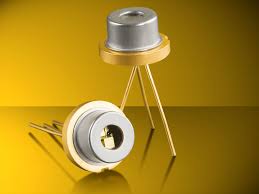A Photodiode is a semiconductor p-n junction device that converts light into an electrical current. The current is generated when photons are absorbed in the Photodiode. It convert the incident light into the electric current and these Photodiode is used in many application.Example, they are used in many medical and in the scientific instruments as well as in the optical instruments. Even they are used commonly in consumer electronic devices like Television and AC to remotely control them.
Symbolic representation of Photo diode
When we see the symbol of the photo diode it is very similarly to the PN Junction diode. But here it has a incoming arrow which indicate that whenever light falls on the Photodiode then it generate the photo current. And when we the construction also it similar to the PN Junction diode, but here to receive the light, the active area of the photo diode is kept transparent. This Photodiode can be used in reverse biased mode.
Working of the Photodiode
Now whenever the light or the photons of sufficient energy fall on the Photodiode then they can knock off the bound electron of the atom in this depletion region. Photocurrents are produced due to generation of electron-hole pairs. When the photon entres the depletion region of diode, it hits the atom with high energy. This will result in release of electron from atom structure, then free electrons and hole are produced. This contribute to generate electric current. As built in electric field already exist in depletion region.
So when we connect ammetre in the circuit then we can measure the generated photocurrent. So in this way in the reverse bias, whenever the light fall on the photodiode then in addition to there small reverse saturation current the photo current is also getting generated. Now generally this reverse saturation current used to be in the range of micro ampere and as the light intensity increases the photo current will also increases.
